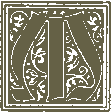|
The
Weaver Poets
by Tom Carty (Thomas O’ Carthaigh),
Tullamore (Tullach Mhor), Ireland, 2008
[This
article is featured in the Lowlands-L History collection as well.]
 ost
famous in these isles of the Weaver Poets were the ones of Scotland and
Ireland, though the North of England also had a very strong tradition. ost
famous in these isles of the Weaver Poets were the ones of Scotland and
Ireland, though the North of England also had a very strong tradition.
However,
being Irish, I’ll focus on those of my isle first.
The
weavers were traditionally Scottish by ethnicity, and from Down and Antrim
in origin, and this small area created the “Bards” who published
books in the 1750–1850 decade, often by subscribing to the books being published by others.
The
nearest the mainstream reader would have come to most of these would be Rabbie (Robert) Burns. Though he was not a weaver or of
the tradition, his works inspired them in the latter stages, and the peaseant poetry styles were of his type.
There
was a broader group, often called the Classical, where standard English and traditional verse forms were the rule, written by the Anglo-Irish element in the Romantic tradition. These are not of what I write.
The
subjects of which these poets wrote were of “Kirk and Kitchen,” everyday life in other words. They wrote of their trade, their lives, the works of others, the politics of the day, addresses to the Freemason lodges of which they were part, and suchlike. With one or two exceptions, there was not much tribute to the beauty of the land in which they lived.
Some
of these poets were pro-Union, but many formed the basis of the United Irishman movement as founded by Theobald Wolfe Tone, Henry Joy Mc Cracken and James and William Orr, the latter two being names highly respected among all shades of opinion in the North of Ireland to this day.
They
wrote in many forms of verse, but most often in the Standard Habbie format,
where the first three lines rhymed, the fourth did not, the fifth rhymed
with the first three, and the last rhymed with the fourth. While this
may look complicated, it suited the verse they wrote, and the speech patteren employed due to their accents.
They
wrote in the standard dialect of their day, which they identitied as “Doric,” nowadays known in Ireland as Ulster Scots in its revived form.
The
most famous poem from these that would be known in Ireland would be “An
Irish Cottiers Death and Burial” by James Orr.
A book,
The Rhyming Weavers,* charts
and analyses the poems of these writers and the culture from which they came. |

